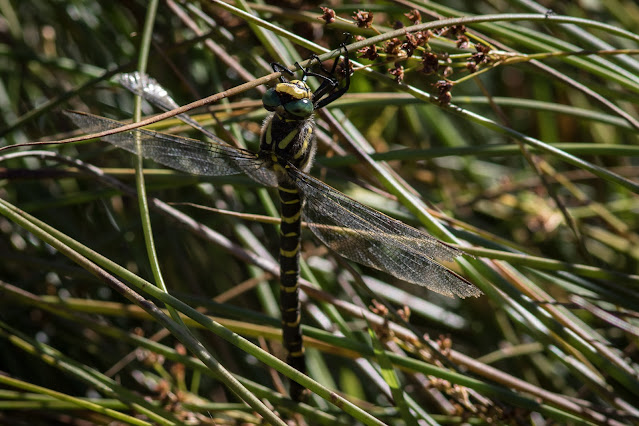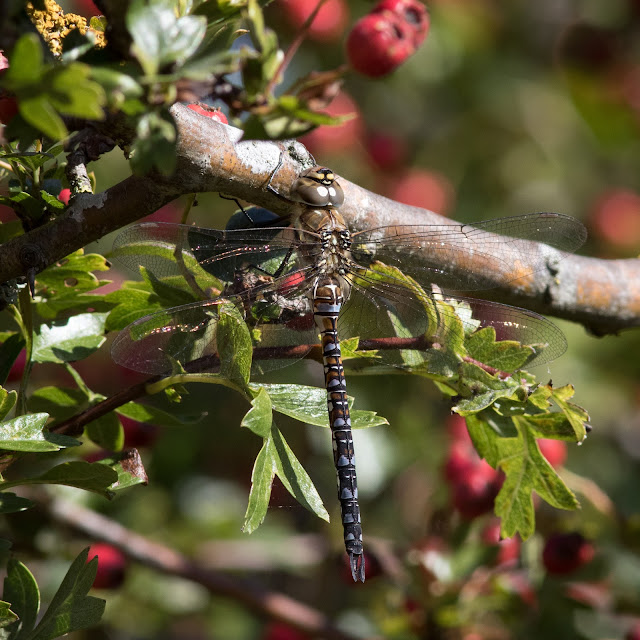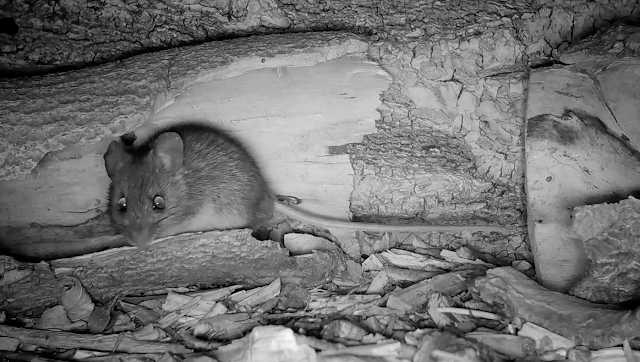The trail cameras regularly record animals they weren't set to look for, usually rats or wood mice but occasionally something more interesting. Here are a few recent observations. First on a camera set to look for an otter. There was no sign in nearly three weeks but it did record a barn owl and a stoat, both firsts for me on trail camera. The owl stopped for a drink during the night and nearly overbalanced and fell in.
On the same camera a stoat went past twice in the same direction, once in the day and once at night.
Then a real oddity. A frog in the small mammal camera box. Given that the frog is cold-blooded I am a bit surprised that the camera's PIR was triggered.
There was a second recording four minutes later but that was triggered by a shrew (yellow arrow). The frog had moved to the back (red arrow). The frog didn't appear on video again during the rest of that night and wasn't in the box next morning so it obviously managed to find its way out again.
Finally a recording from yesterday, again on a camera set to look for otters. The first six frames recorded a kingfisher in the culvert. I think it must have triggered the camera as it dived and was captured on the rise (you can see the water is disturbed in the background). It is so brief you can't see what it is in real time on the video but it shows on freeze frame. It is difficult to be sure but I think it has a fish in its beak. I wonder if it had been using the camera as a perch to dive from.
I have once seen a kingfisher before on trail camera but never diving or in flight.





































